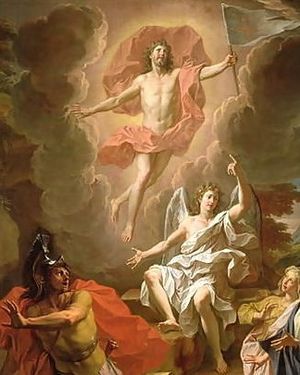What will our resurrection bodies be like?
In 1 Cor. 15:35-49, Paul deals with a possible objection to the idea of resurrection. That is, someone might say that the resurrection body is inconceivable. After all, what about people who have cremated or dismembered? Or how about the bodies of sailors who died at sea? It’s difficult to imagine just how resurrection might work in such circumstances.
Paul’s response is severe. He calls the interlocutor a “fool” (1 Cor. 15:35). In the Bible, a fool is not a person with a mental deficiency. A fool is a person with a moral deficiency. Ps. 14:1 says, “The fool has said in his heart, ‘There is no God.” In other words, a fool is someone who underestimates the power of God.
So, just because you can’t conceive of the resurrection, it doesn’t mean that the resurrection is not true. It might just mean that you lack imagination.
We can sum up Paul’s description of the resurrection body with five truths.
1) Our resurrected bodies will be transformed bodies (vv. 36-37).
Paul gives the illustration of a seed. When you bury a seed in the ground, the seed develops and changes. It becomes a plant. In the same way, our resurrected bodies will be transformed bodies. So, if your mental picture of the resurrected body is that of a zombie, you need to go back to the drawing board. The resurrection involves much more than just the resuscitation of the corpse. It is a complete renewal of the body. A total makeover. It will have significant upgrades to the body we have now.
2) The resurrected body will be built from a dead body (vv. 36-37).
A plant grows from the seed. There is a continuity between a seed and plant. In the same way, the resurrected body will have some continuity with the current body. The resurrection reminds us that God doesn’t just discard His creation. He renews it.
This is also an indication that we will be able to recognize our friends and loved ones in God’s future world.
3) Our resurrection bodies will display the Creator’s ingenuity (vv. 38-41).
In the next paragraph, Paul describes the great diversity displayed in God’s creation. God has created a wide variety of creatures. Some of these are earth creatures. Some of these are heavenly creatures. God gives to each a body “as He has determined” (v. 40). We can’t even begin to describe all the different types of creatures that God has made. So, doesn’t it seem a little silly to doubt God’s ability to renew and restore for us our dead bodies?
4) Our resurrection bodies will run on a superior source of energy (vv. 42-45).
V. 44 is a significant verse in this text. Unfortunately, most English translations obscure its meaning (cf. NT Wright). ”It is sown a natural body, it is raised a spiritual body” (NIV). The words “natural” and “spiritual” make it sound like Paul is making a material distinction here. In other words, the natural body sounds like a physical body, while the spiritual body sounds like a non-physical body. However, nothing could be further from the truth.
Paul is not making a distinction in materials here. He is making a distinction in sources of energy. The word translated natural is the Greek word psychikos. It refers to the human psyche. The psyche is what God breathes into Adam. It is the human life-force. It’s what energizes and animates our bodies. When we die, our psyche leaves our bodies. It’s not a sustainable form of energy. That is why Paul says that the psychikos body is perishable, dishonored, and weak.
However, our resurrection bodies will have a superior source of energy. They will be pneumatika bodies. Spiritual bodies. Instead of being energized by the human psyche, the resurrection body will be energized by God’s own Holy Spirit. The energy which comes from the Spirit is self-sustaining. It will never die out. It’s a renewable form of energy.
5) Our resurrection bodies will resemble the Prototype (vv. 46-49).
Paul sums up all of history with two people, Adam and Jesus. Both of these men were patterns for those who came after them. Adam is a pattern for ordinary human life. The type of life that results in death. Jesus is a pattern for a different type of life. The type of life that results in results.
The goal is to bear the image of Jesus. He is the prototype for God’s new humanity. One day we will be like Him.
Related articles
- The Easily Unspoken Hope (kenthaley.wordpress.com)
- Jesus’ Wounds, His Resurrection Body, and Our’s (hillsbiblechurch.org)
- William Lane Craig debates James Crossley on the resurrection of Jesus (winteryknight.wordpress.com)
- Heaven is Not Our Home (daviddflowers.com)
- What Will Our Resurrected Bodies Be Like? (adw.org)





















